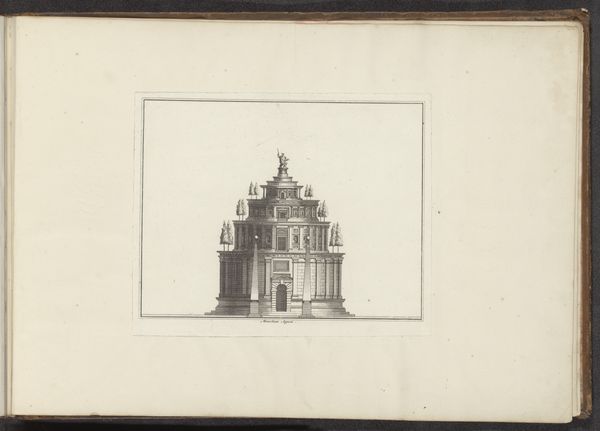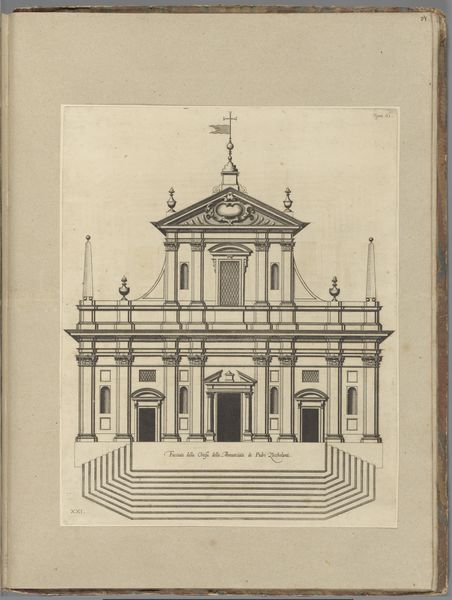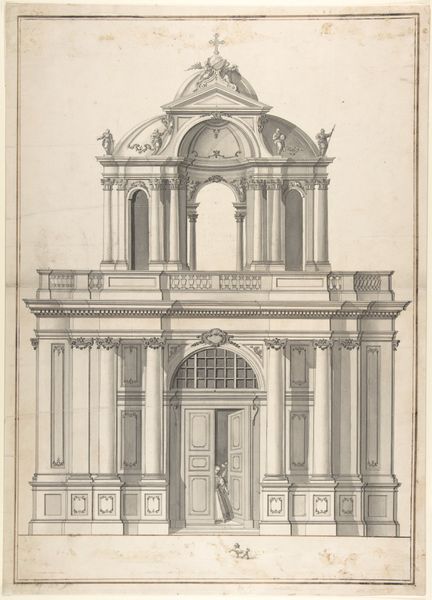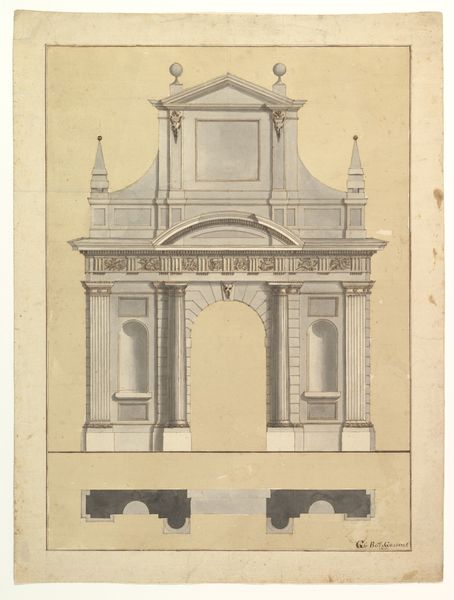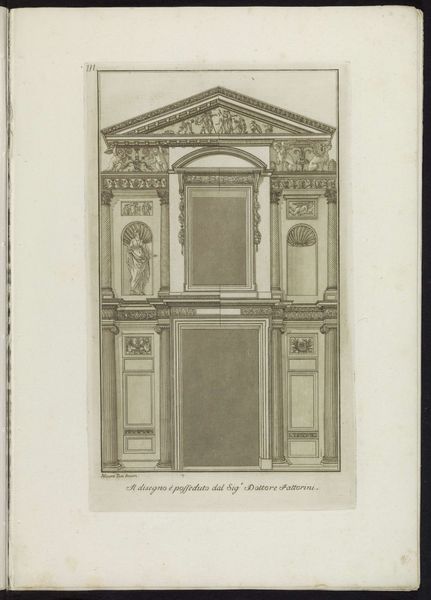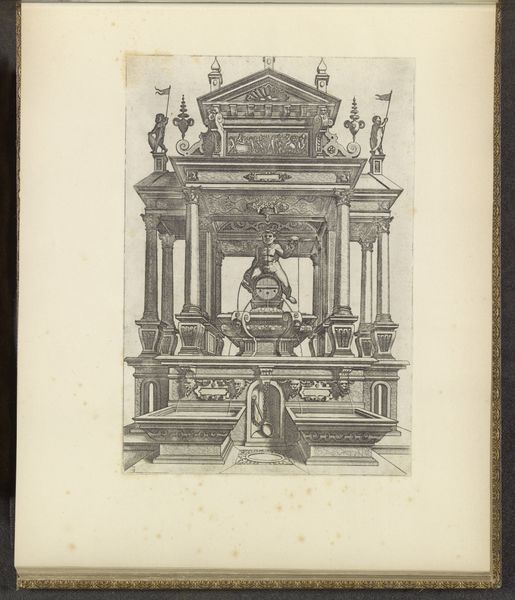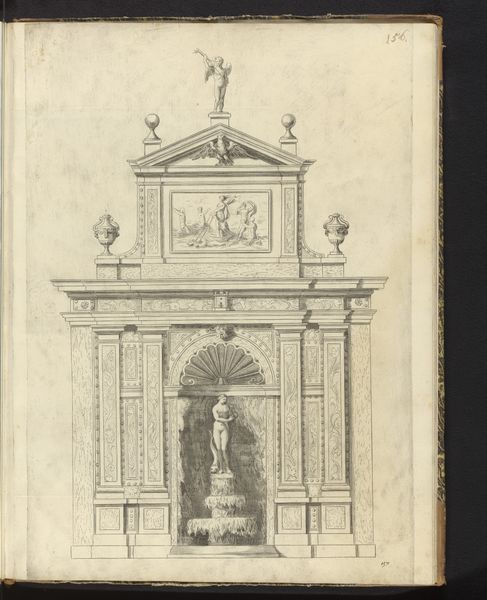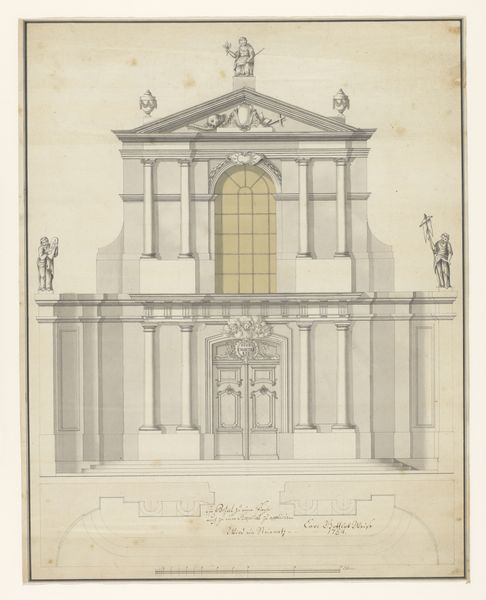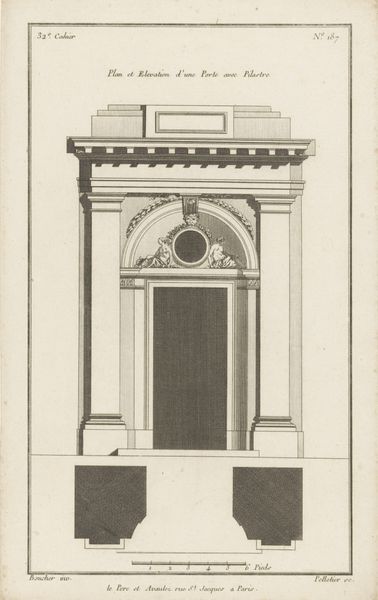
drawing, print, paper, ink, engraving, architecture
#
drawing
#
baroque
# print
#
paper
#
ink
#
geometric
#
cityscape
#
academic-art
#
engraving
#
architecture
Dimensions: height 303 mm, width 258 mm, height 583 mm, width 435 mm
Copyright: Rijks Museum: Open Domain
Curator: This meticulous engraving presents the facade of the Basilica di San Siro in Genoa, rendered by Nicolaes Ryckmans around 1622. The image, executed with ink on paper, belongs to the collections of the Rijksmuseum. Editor: My first impression is one of severe clarity. The lines are so precise, the geometry so ordered, it almost feels like a blueprint more than a work intended for artistic appreciation. I immediately wonder about the social function of a drawing like this. Curator: Well, notice the way the facade is presented head-on. This emphasizes its architectural features – the pillars, the niches, and especially the statuary above the entrance. These elements signal the church's role as a sacred space, drawing on familiar visual tropes of power and divine presence. The Baroque style, even in this restrained black and white representation, uses recognizable forms to inspire devotion. Editor: But the print medium itself is crucial, isn't it? Unlike a fresco or a painting on canvas intended to remain fixed in place, an engraving can be reproduced, distributed, and consumed widely. Ryckmans, by focusing on the facade, isolates and celebrates the external face that the Church wishes to project. I see a highly strategic act here involving networks of distribution, appealing to power, luxury and ultimately religious indoctrination. Curator: I agree that distribution matters. The image serves not just as a record but as a potent symbol readily available and easily legible. For whom and in what circles? Certainly wealthy patrons building or updating facades would seek images such as these for their architectural cues as the Church projects its enduring influence. Consider, the symbolic weight of the cityscape becomes a transferable commodity. Editor: Indeed! The material processes and artistic labor underpinning such imagery solidify its importance. We should acknowledge not only the aesthetic appeal but the networks involved in design, labour, marketing, trade... even warfare might touch the distribution of certain images! How are materials selected to convey meaning and project cultural power? It would be intriguing to examine the labor involved in its creation, the trade networks that circulated the print, and the modes of consumption available at that time. Curator: Ryckman's choice to depict this particular facade points to a strategic dissemination of established architectural vocabulary which, upon repeated encounters, shape cultural perceptions and reaffirm established authority, in that case ecclesiastical order. Editor: So, beyond a pretty picture, we find intricate layers of historical significance and processes inherent to the print as both an image and an artifact.
Comments
No comments
Be the first to comment and join the conversation on the ultimate creative platform.
